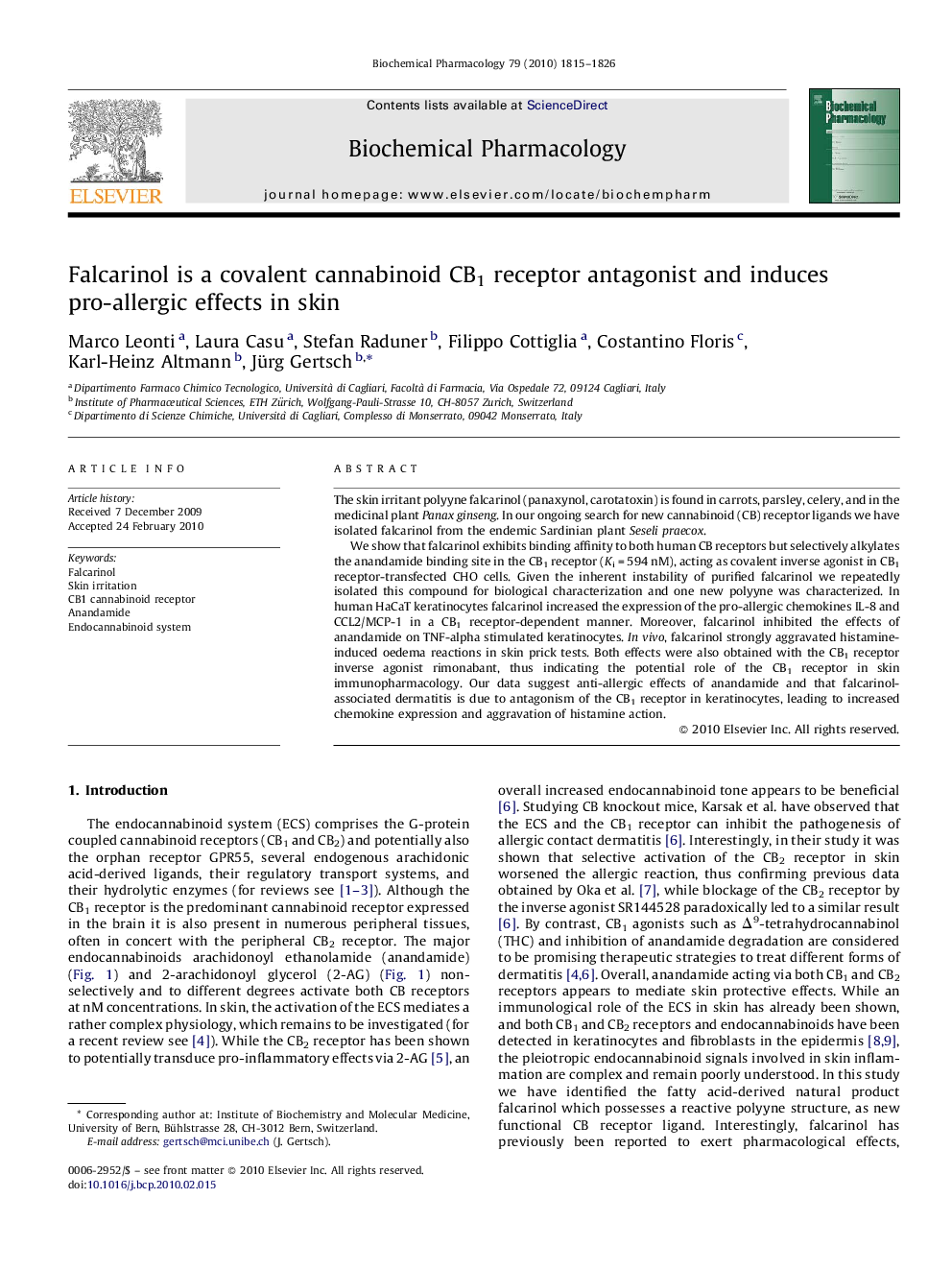| Article ID | Journal | Published Year | Pages | File Type |
|---|---|---|---|---|
| 2513563 | Biochemical Pharmacology | 2010 | 12 Pages |
The skin irritant polyyne falcarinol (panaxynol, carotatoxin) is found in carrots, parsley, celery, and in the medicinal plant Panax ginseng. In our ongoing search for new cannabinoid (CB) receptor ligands we have isolated falcarinol from the endemic Sardinian plant Seseli praecox.We show that falcarinol exhibits binding affinity to both human CB receptors but selectively alkylates the anandamide binding site in the CB1 receptor (Ki = 594 nM), acting as covalent inverse agonist in CB1 receptor-transfected CHO cells. Given the inherent instability of purified falcarinol we repeatedly isolated this compound for biological characterization and one new polyyne was characterized. In human HaCaT keratinocytes falcarinol increased the expression of the pro-allergic chemokines IL-8 and CCL2/MCP-1 in a CB1 receptor-dependent manner. Moreover, falcarinol inhibited the effects of anandamide on TNF-alpha stimulated keratinocytes. In vivo, falcarinol strongly aggravated histamine-induced oedema reactions in skin prick tests. Both effects were also obtained with the CB1 receptor inverse agonist rimonabant, thus indicating the potential role of the CB1 receptor in skin immunopharmacology. Our data suggest anti-allergic effects of anandamide and that falcarinol-associated dermatitis is due to antagonism of the CB1 receptor in keratinocytes, leading to increased chemokine expression and aggravation of histamine action.
Graphical abstractFigure optionsDownload full-size imageDownload as PowerPoint slide
